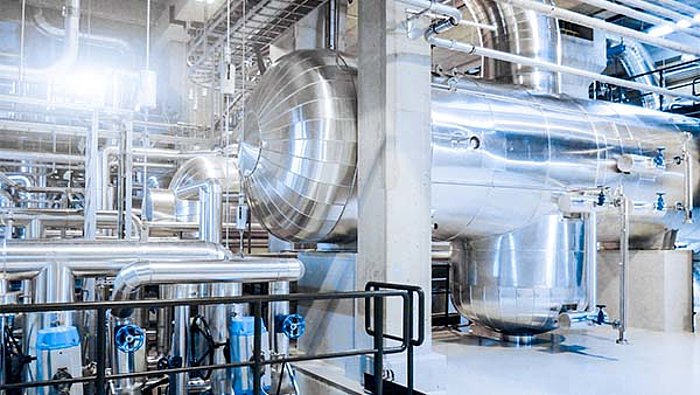Thermal oil
Thermal oil
Choosing the right heat transfer medium is crucial for an industrial plant. There is a lot to be said for thermal oils(also called heat transfer oils), which are used in systems as heating or cooling media. There are major differences in their chemical composition, viscosity, flammability, freezing and boiling points. This also applies to the origin of the thermal oils. They can be roughly divided into mineral oils, synthetic oils, biological oils and aromatic hydrocarbons.
Advantage: There are a number of reasons why thermal oils are convincing as heat carriers in thermal oil systems and why they are used in a wide variety of applications. For example, they do not require pressure to reach very high temperatures, they do not oxidise in the pipes and are comparatively inexpensive. The heat capacity depends strongly on the respective oil.
Properties of thermal oil
Thermal oils have different properties depending on the area of application. An advantage of these oils compared to water and water vapour is that they are also suitable as conductive media at temperatures of more than 200 °C. They can act as a heat transfer medium up to a temperature of around 400 °C. In a temperature range up to a maximum of 300 °C, it is usually sufficient to use comparatively cheap mineral oils. If the temperature clearly exceeds this mark, the use of synthetic oils is advisable, as they have a higher temperature resistance and can therefore be used for longer. In contrast to water, heat transfer oil does not have to be used at overpressure. For systems, this means the advantage of a lower load. Other useful properties of these oils are their resistance to oxidation and good thermal conductivity.
The heat capacity of thermal oil
Many factors play a role in thermal oils, one of which often receives little attention: the specific heat capacity. This describes the amount of heat that is required to change the temperature of a substance, in this case thermal oil, by a certain amount. The specific heat capacity, like the cooling capacity, is proportional to the specific heat of a thermal oil, while both the liquid resistance and the thermal resistance depend on the viscosity or thermal conductivity. The specific heat capacity not only differs from oil to oil, but also depends strongly on the temperature. It is therefore important to know the exact heat capacity for the temperature range required for the application, which manufacturers provide information about in the form of relevant tables.
Areas of application
Heat transfer oil plays a crucial role as a medium for heat transfer in heating systems, but also in combined heating and cooling systems. What speaks for thermal oils is that they remain stable at temperatures above 300 °C and thus ensure optimal heat transfer. Thermal oils are mainly used when direct heating is impossible, which is often the case with dangerous or particularly sensitive materials such as synthetic resin. They are indispensable in the following areas:
- Resin manufacture
- Waste heat recovery
- Paper industry
- Food industry
- Plastic industry
- Cement industry
Thermal oil plants
Heating systems that are operated with the help of thermal oil are basically closed systems. The expansion vessel is clearly separated from the outside area, with nitrogen being used as an inert gas, for example. Since no steam boiler is required, a thermal oil system does not require water treatment and therefore no corroded pipes. Such a system is therefore characterized by very manageable investment and maintenance costs. Compared to a water or steam system, thermal oil systems can provide heat in a wide temperature range with practically no pressure. The only thing that matters is the pressure caused by a circulation pump.
- Heat transfer oil
- Thermalöl
Synonyme für Thermal oil





